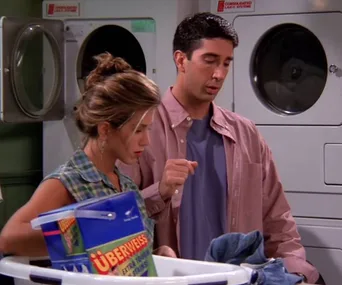There’s a lot of misinformation out there about the best way to care for clothes, especially how to keep them clean.
When it comes to the delicate art of stain removal, it seems everyone has a tried and tested “tip”.
So Woman’s Day decided to track down an expert, the famous Australian cleaning guru Shannon Lush, to give us the best advice.
“It really is just a matter of chemistry,” explains Shannon, who’s written seven books on the subject. “There is no ‘one-size fits all’ solution, and if anyone does try to tell you that something cleans everything… it can’t.”
Grease
Oily stains can be one of the worst, but the good thing is they never actually set. Squeeze two or three drops of dishwashing liquid onto your fingertips (no water), and rub it into the spot.
When you can feel it’s changed texture (becomes jelly-like), it will then just rinse out in cold water.
Red wine
Hold the stain area over an open-mouthed jug and pour white vinegar through it again and again until it’s gone. If it’s an older stain, wipe it with vinegar and then sprinkle it with bicarbonate of soda (it will turn grey). Rinse vinegar through it again straight away.
Grass
Just wipe it with some white spirit (hardware stores stock it).

Ink
All pens are not the same. If it’s a fountain pen stain, the best thing for it is rotten milk. Place 300ml of milk in an open-mouth container and leave it out in the sunshine until it goes all lumpy and disgusting.
It’s those lumps you want to place onto the stains. The sun will break the lumps down and then you can just wash them away.
Cherries
Wipe with white glycerine and white vinegar and hang it in the sun. The UV rays actually react with the vinegar and bleach the stain for you.
Blood
The biggest problem is when people throw the kitchen sink at it. All you need is cold water and common bathroom soap.
Then it comes straight out when it’s rubbed. If the blood has set, wipe it with glycerine and leave it for 30 minutes first, then do as above.
“Knowing the most effective way to use our washing machines, means that when it comes to the best care for your clothes you’ll be using ‘prevention’ rather that always ‘cure’,” Shannon says.
A common laundry faux pas is using way too much detergent. “Soap is actually designed to break down the surface tension of the water,” Shannon says, “so the water can get in and do the washing. But too much soap means it impregnates the fibres instead and just doesn’t work.”
Shannon’s recipe for the best everyday laundry washing
For top loaders: One-quarter of the quantity of laundry detergent that’s “recommended” on the product; plus two tablespoons of bicarbonate of soda; and the same of white vinegar in the “fabric conditioner” slot.
For front loaders: One-eighth the amount of recommended and then the same instructions as above.
“You need to use body-temperature water; check the temp on your wrist as you would a baby’s bottle,” Shannon says. “Add two teaspoons of really cheap shampoo then wash out the fabric and rinse in water exactly the same temperature. Dry it in the still air and in the shade, as wind and sun can tease and damage the fibres.”
“I hand-wash quite a few things” Shannon says, “as I actually find it quite therapeutic. Wool definitely requires it. Wash it the same way as for silk, but let it dry flat, on a towel in the shade.
.png?resize=380%2C285)
